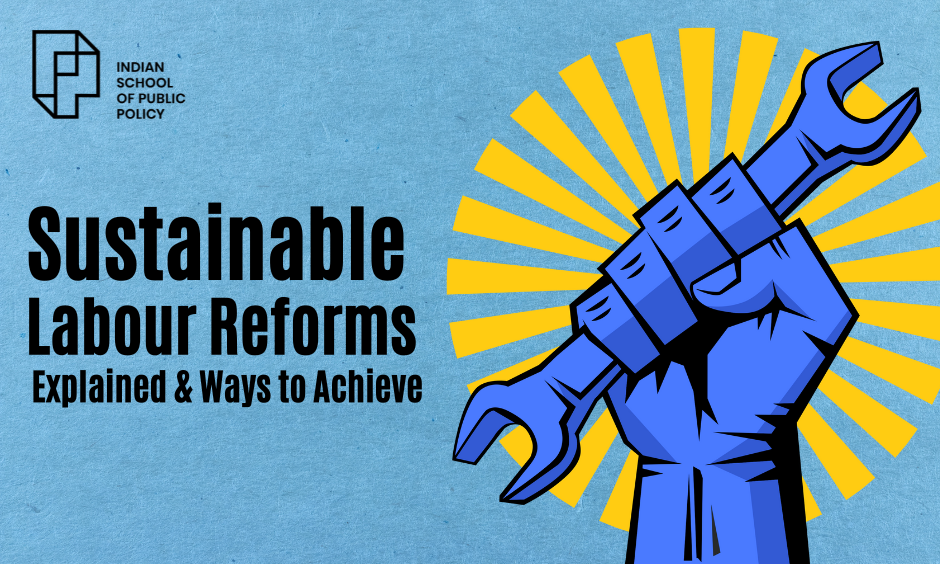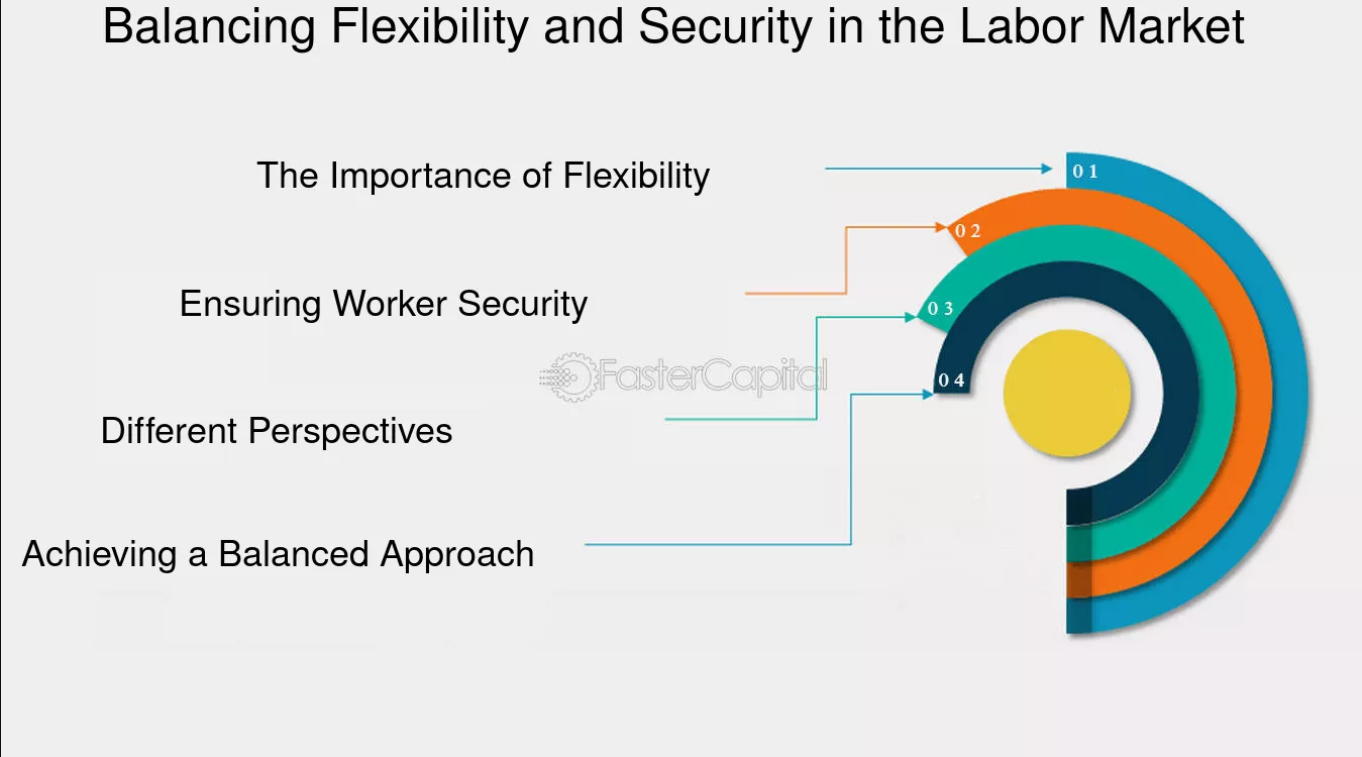
Sustainable Labour Reforms Explained & Ways to Achieve

What are sustainable labour reforms and how can they be achieved?
Introduction
“The progress of any society depends on the progress of the working class. Labour is not a commodity, it is the vital force in the production process.” – Dr. B.R. Ambedkar
Labour reforms can be thought of as essential tune-ups for a nation’s workforce engine. Just as a car needs regular adjustments to maintain efficiency, a country’s labour laws must be updated to keep pace with socio-economic changes. In a diverse and rapidly evolving country like India, sustainable labour reforms are the foundation for balancing workers’ rights with industrial growth, helping build an economy that is both resilient and fair.
Let’s explore the transformative labour reforms that the government passed to ensure sustainability and create a harmonious balance between workers’ welfare and economic development.

Major labour reforms shaping the sustainable growth of India’s workforce
| India’s journey toward sustainable labour policies has seen several key reforms post-independence 1948 – The Industrial Disputes Act established a framework for resolving industrial conflicts and promoting harmonious labour relations. 1948 – The Factories Act was implemented to oversee working conditions, safety, health, and welfare in manufacturing establishments. For example: It prohibits the employment of women in any part of a factory where cotton pressing is carried out with a cotton opener in operation. 1952 – The Employees’ Provident Fund Act was enacted, aiming to secure retirement savings for employees. 1952 – Under the Mines Act, women are prohibited from working in any part of a mine that is located below ground. 1961 – The Maternity Benefit Act governs the employment of women in specific establishments during designated periods before and after childbirth, ensuring they receive maternity benefits. 1976 – The Bonded Labour System (Abolition) Act prohibited bonded labour, ensuring workers could not be forced into exploitative employment. 1996 – The Minimum Wages Act set minimum wages in various sectors, protecting workers from exploitatively low pay. 2008 – The Unorganised Workers’ Social Security Act aimed to provide welfare to unorganised sector workers, covering health and life insurance and pension. 2020 – The labour codes (the Code on Wages, the Code on Social Security, the Industrial Relations Code, and the Occupational Safety, Health and Working Conditions Code) were consolidated to streamline regulations, enhance worker protections, and improve employer compliance. |
Each of these reforms has played a role in shaping India’s labour landscape, building a bridge between workers’ welfare and industrial progress. As India moves towards a future-focused economy, these sustainable reforms provide a blueprint for addressing emerging workforce challenges and fostering an inclusive and robust labour environment.
Understanding sustainable labour reforms
Sustainable labour reforms are policies designed to foster a healthy balance between economic stability, workforce welfare, and inclusivity. The goal is to create a fair and adaptable labour market where worker protection and productivity go hand in hand. These reforms aim to improve working conditions, support long-term growth for both employers and employees and build a resilient economy.
In 2002, the Second National Commission on Labour (NCL) identified that India’s labour laws were outdated, complicated, and filled with unclear definitions. To make them simpler and easier for businesses and workers to understand, the NCL recommended organising the laws into five main categories:
- Industrial relations
- Wages
- Social security
- Safety
- Welfare and working conditions
In response, the Ministry of Labour and Employment introduced four new labour code bills to streamline 29 existing labour laws into a unified framework. These new labour codes mark a major step in reforming and modernising India’s labour laws, simplifying the system for both businesses and workers. By consolidating multiple regulations into four comprehensive codes, the reforms aim to create a more accessible, efficient, and cohesive legal structure.
- Code on Wages (2019): This code unifies wage-related laws, ensuring that all employees receive fair and timely wages. It enforces equal pay for equal work across genders and sectors and sets standards for minimum wage, payment schedules, and bonuses.
For example: A factory worker is paid a set minimum wage based on their role and industry standards, ensuring they receive fair compensation for their work. The code also mandates that employees receive equal pay for equal work, regardless of gender, ensuring fairness across sectors.
- Industrial Relations Code (2020): This code redefines the rules governing workplace relations, from hiring practices to dispute resolution. It promotes smoother industrial relations by balancing workers’ rights with employers’ operational needs, aiming to reduce disputes and foster a more cooperative work environment.
For example: In a manufacturing company, a dispute arises between management and workers regarding overtime pay. Under the new code, both parties engage in structured negotiations, leading to a peaceful resolution without the need for prolonged strikes or disruptions.
- Code on Social Security (2020): Extending social security to a wider group, including gig and platform workers, this code provides essential benefits like pensions, maternity leave, gratuity, and health insurance for organised and unorganised sectors alike.
For example: A freelance delivery driver, classified as a gig worker, is now eligible for health insurance and maternity benefits under the code, extending the same social security protections that traditionally applied to salaried workers in the organised sector.
- Occupational Safety, Health, and Working Conditions Code (2020): This code updates and merges laws related to workplace safety and health standards, specifying responsibilities for both employers and employees to maintain a safe work environment. Special provisions are included for workers in high-risk jobs.
For example: In a construction site, workers are provided with necessary safety gear, and the employer ensures regular health checks. Additionally, the code mandates safety protocols for high-risk jobs, like ensuring proper ventilation and protective equipment for workers handling hazardous materials.
These codes aim to reduce regulatory complexity, making it easier for businesses to comply while expanding labour protections. By modernising the framework, India hopes to create a more adaptable, fair, and inclusive labour environment that benefits the entire workforce.
By implementing these laws, India seeks to balance the goals of worker protection and workplace flexibility, drawing inspiration from successful models in countries like Germany and the UK, which are known for their robust labour frameworks that support both employees’ rights and business adaptability. However, India still faces unique challenges in aligning these reforms with its diverse workforce.
5 key challenges in the current labour reforms
While the new labour reforms mark progress in streamlining regulations and enhancing worker protections, several significant challenges and gaps remain that require careful attention to ensure the reforms are inclusive, fair, and effective. Below are the primary areas of concern:
- Inspector-cum-facilitator role
The new “Inspector-cum-Facilitator” role combines two responsibilities: ensuring compliance and helping businesses meet standards. However, these roles often conflict—an inspector’s job is to enforce, while a facilitator’s is to support. This overlap can create confusion, hindering effective implementation.
- Unclear definitions of “worker” vs. “employee”
One major issue is the lack of clarity about who qualifies as a “worker” or “employee,” particularly concerning overtime pay. This uncertainty is especially relevant for remote workers, who have become increasingly common since the COVID-19 pandemic. Clear definitions are necessary to ensure fair compensation in this new work environment.

- Exclusion of small startups and informal workers from social security
Small businesses, micro-enterprises, and informal workers—especially those in rural areas—are not covered by social security benefits. As a result, vulnerable groups such as migrant workers and the self-employed remain uncertain about their rights and protections, leaving them exposed to economic instability.
- Non-inclusion of charitable and non-profit organisations
The Occupational Safety, Health, and Working Conditions Code does not extend to charitable and non-profit organisations. This exclusion leaves these entities without a clear regulatory framework, creating a gap in protections for those working in these sectors.
- Invisible labour
Perhaps the most critical oversight is the failure to recognise “invisible labour.” This term refers to unpaid work, such as household chores, childcare, and caregiving, much of which is performed by women. These workers often go unacknowledged, working long hours without compensation, formal recognition, or even basic breaks.
Transforming India’s workforce for a sustainable future
Aiming to create a fair, resilient workforce, sustainable labour reforms in India focus on the following for long-term economic growth:
- Simplification and consolidation of laws
Following the 2002 recommendations of the Second National Commission on Labour, the Ministry of Labour and Employment merged 29 separate laws into four unified codes. This consolidation simplifies compliance, making regulations clearer and more accessible for India’s workforce. Similar to how organising a cluttered closet creates order, streamlining labour laws reduces confusion, helping both workers and employers easily understand their rights and responsibilities. These reforms lay the foundation for sustainable workforce growth, boosting productivity and enabling businesses and workers to navigate an evolving economy with greater confidence and clarity.
- Worker security and flexibility
Sustainable reforms emphasise job security while offering flexibility for gig and contract workers, who form an increasing part of India’s workforce. The reforms aim to ensure fair wages, access to benefits, and protections for these workers, balancing their need for security with the flexibility modern employment demands.
Source link : Click here

- Formalisation of the informal sector
A significant portion of India’s workforce remains in the informal sector. Sustainable labour reforms aim to bring these workers into the formal economy, granting them access to essential benefits like social security and fair wages, thus creating a more inclusive workforce.
- Skill development and workforce adaptability
As the economy evolves, workers must be equipped with new skills to meet changing job demands. Labour policies should focus on upskilling and reskilling programs that allow workers to stay competitive, ensuring long-term economic growth and workforce resilience.
Source: Click here

3 challenges to implementing sustainable labour reforms
While the components of sustainable labour reforms are promising, several challenges can hinder their implementation:
- Resistance from stakeholders
Both workers and employers may resist these reforms. Workers might worry about losing their jobs, especially as technology and automation become more common. Employers, on the other hand, may be concerned about the cost of following new rules and regulations.
- Lack of strong enforcement
Even if the reforms are well-planned, they won’t work unless there’s a system to make sure everyone follows them. Strong monitoring and enforcement are needed to ensure that both workers and employers are meeting the new standards.
- Lack of awareness among workers
For reforms to work, workers need to know their rights and benefits. Many workers may not be aware of what the reforms mean for them. Educating workers about these changes will help them understand their rights and better navigate the new system.
Strategies to achieve sustainable labour reforms
Implementing effective labour reforms requires collaboration, monitoring, technology, and adaptability. Key strategies include strengthening tripartite dialogue, robust evaluation, leveraging technology, and continuously adjusting policies to meet evolving needs and challenges.
- Strengthening tripartite dialogue
Collaboration between the government, workers, and employers is crucial for successful reform implementation. A tripartite dialogue ensures that all parties have a voice in shaping policies, leading to more practical, balanced, and widely accepted solutions.
- Robust monitoring and evaluation
Regular monitoring and evaluation of reform progress help identify areas of improvement. By assessing the impact of reforms over time, policymakers can make adjustments to better meet the needs of workers and industries.
- Leveraging technology and data
Digital tools can streamline compliance and enhance transparency. By creating accessible platforms for tracking labour law compliance and addressing grievances, labour reforms can become more efficient and responsive.
- Continuous policy adjustment
Like adjusting sails to navigate changing winds, labour policies need to remain adaptable. Continuous feedback and adjustments based on real-world outcomes ensure that the reforms remain effective and relevant in the face of changing economic conditions.
Conclusion
Sustainable labour reforms are key to building a fair, adaptable, and resilient workforce in India. By striking the right balance between economic growth and worker welfare, these reforms can create a more inclusive, stable, and productive economy. Policymakers, industry leaders, and workers must work together to create a labour market that empowers workers and strengthens the nation’s economic resilience.
The Indian School of Public Policy (ISPP) is committed to educating and preparing future policy professionals to address critical issues such as these, ensuring impactful and sustainable change for the labour market.
Register your Interest to Study at ISPP
FAQS
Why are sustainable labour reforms important for India’s economic growth?
Sustainable labour reforms are essential for balancing worker protections with economic flexibility, creating a workforce that can adapt to changing industries and technologies. By simplifying and updating labour laws, India can attract more investment, improve productivity, and support stable job creation, ultimately fostering a stronger, more inclusive economy.
How do sustainable labour reforms impact women in the workforce?
Sustainable labour reforms have introduced several acts aimed at promoting gender equality and ensuring safer work environments for women. Key legislation includes the Maternity Benefit Act, 1961, which mandates maternity benefits and paid leave for expecting mothers, supporting their health and job security. The Sexual Harassment of Women at Workplace (Prevention, Prohibition and Redressal) Act, 2013 provides a framework to establish anti-harassment policies, fostering a safer workplace. Additionally, the Equal Remuneration Act, 1976 mandates equal pay for equal work across genders, combating wage disparity. These reforms, alongside initiatives supporting flexible work hours and family leave policies, help improve working conditions and ensure fair treatment, creating a more inclusive and balanced workforce.
How do sustainable labour reforms affect gig and platform workers in India?
The recent labour codes include provisions for gig and platform workers, offering social security benefits like health insurance and pensions for the first time. This marks a significant step towards formalising these jobs, providing a safety net that protects freelance and temporary workers from economic instability while giving them more job security and benefits.
What role does skill development play in sustainable labour reforms?
Skill development is crucial to sustainable reforms, as it enables workers to remain competitive in an evolving job market. By focusing on upskilling and reskilling, reforms help workers adapt to technological advancements and changing job demands, ensuring that both the workforce and economy remain resilient over time.
How do sustainable labour reforms address workplace safety in high-risk jobs?
The Occupational Safety, Health, and Working Conditions Code requires that employers provide safety gear, regular health checks, and enforce safety protocols, especially in high-risk industries like construction and mining. This focus on safety ensures that workers are protected and helps prevent accidents, fostering a healthier, safer work environment.
What challenges might small businesses face with sustainable labour reforms?
Small businesses may face challenges in understanding and implementing the new codes, especially regarding compliance and providing social security benefits. While the reforms aim to simplify regulations, small enterprises might need additional support and resources to adapt to the new requirements without compromising their operational efficiency.


